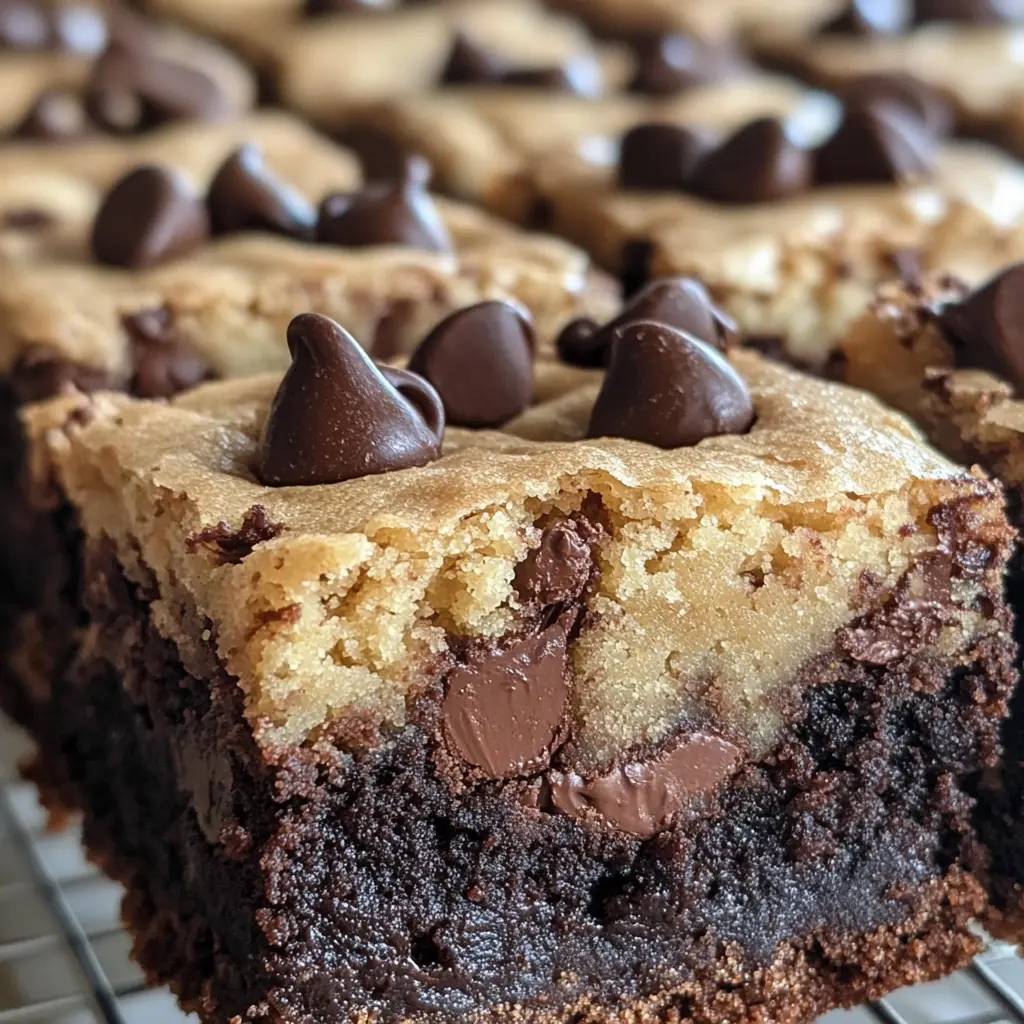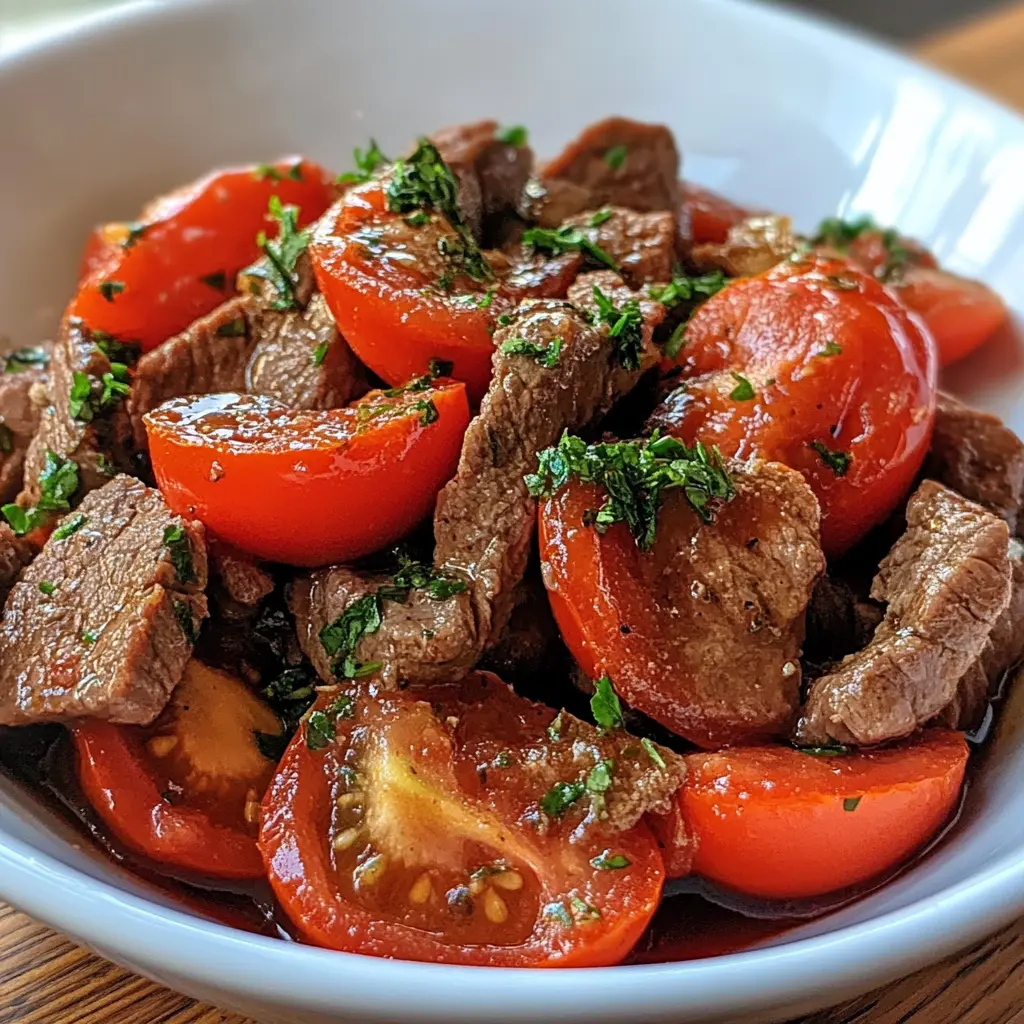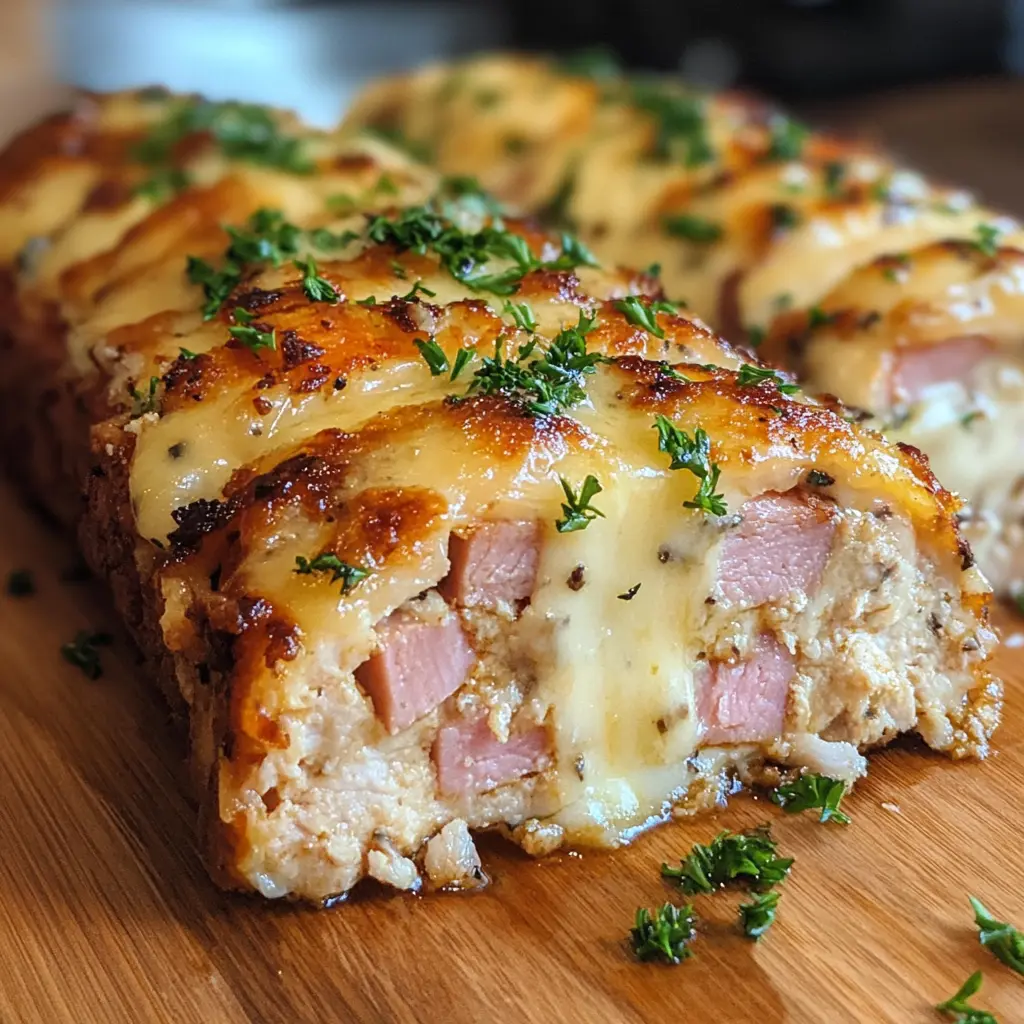Introduction to Fudgy Chewy Brookies
Brookies are the perfect dessert for anyone who loves both brownies and cookies. Combining the rich, fudgy texture of a brownie with the chewy, slightly crisp edges of a cookie, brookies offer the best of both worlds in every bite. Whether you prefer them as bars or cookies, they make an indulgent treat that satisfies every chocolate craving.
The beauty of brookies lies in their versatility. You can customize the recipe by adding nuts, caramel, or extra chocolate chips to enhance the flavor. They can be made in different shapes, from traditional cookie-sized portions to thick, gooey brookie bars. With the right balance of ingredients and baking techniques, you can achieve the perfect combination of a crispy exterior and a soft, melt-in-your-mouth interior.
This guide will take you through everything you need to know about making fudgy chewy brookies, from understanding the science behind their texture to step-by-step instructions for the perfect batch. Whether you’re a beginner or an experienced baker, you’ll find expert tips to help you master this delicious dessert.
Table of Contents
Understanding the Science Behind Fudgy and Chewy Brookies
Achieving the perfect texture in brookies depends on the right balance of ingredients, mixing techniques, and baking time. Some people prefer their brookies to be extra fudgy, while others like them with a bit more chew. Understanding what makes brownies fudgy versus chewy will help you customize the recipe to your liking.
What Makes Brownies Chewy vs. Fudgy?
The main difference between chewy and fudgy brownies lies in the ratio of fat, sugar, and flour.
- Fudgy brownies have a higher fat-to-flour ratio, usually with more butter or chocolate. This creates a moist, dense texture.
- Chewy brownies have a bit more flour and sometimes an extra egg to add structure while still maintaining softness. Brown sugar is often used to enhance chewiness.
Since brookies are a combination of both brownies and cookies, the challenge is to balance these textures to create a dessert that is both chewy and fudgy.
Key Ingredients for Achieving the Perfect Texture
The right ingredients play a huge role in determining how your brookies turn out.
- Butter adds richness and moisture. Using melted butter in the brownie batter gives it a fudgier texture, while creaming butter with sugar in the cookie dough helps create chewiness.
- Chocolate is key for fudgy brownies. High-quality dark chocolate melts smoothly and provides an intense flavor.
- Sugar affects both texture and flavor. Granulated sugar creates a crisp texture, while brown sugar retains moisture and makes the cookies chewier.
- Eggs contribute to the structure. Extra egg yolks help create a fudgy, rich consistency.
- Flour gives structure to brookies. Using too much can make them cakey, while too little can make them overly soft. A balance between the two is ideal.
How Baking Time Affects the Consistency
Baking time and temperature determine whether your brookies turn out gooey, chewy, or dry.
- For fudgy brookies, bake them for a shorter time at a slightly lower temperature. The centers will continue to set as they cool.
- For chewier brookies, bake them a little longer at a slightly higher temperature so the edges become crisp while the centers stay soft.
Brookies should be removed from the oven while they still look slightly underbaked in the center. As they cool, they will firm up while staying soft and fudgy inside.
Ingredients for the Best Fudgy Chewy Brookies
The secret to making the perfect brookies lies in selecting the right ingredients and balancing them correctly. Since brookies combine brownie and cookie dough, each component requires specific ingredients to achieve the ideal texture.
Essential Ingredients for Brownie Batter
The brownie layer is responsible for the fudgy richness in brookies. Here’s what you’ll need:
- Dark Chocolate – Provides deep, rich chocolate flavor and helps create a fudgy texture. Use high-quality chocolate with at least 60% cocoa for the best results.
- Unsalted Butter – Adds moisture and richness. Melted butter enhances the fudginess of the brownies.
- Granulated Sugar – Sweetens the brownies and helps create the signature crackly top.
- Brown Sugar – Contributes to a chewy texture by adding moisture.
- Eggs – Help bind the ingredients together and give the brownies structure. Using an extra yolk adds richness.
- Cocoa Powder – Intensifies the chocolate flavor. Use unsweetened cocoa powder for a deep, rich taste.
- All-Purpose Flour – Provides structure. Too much can make the brownies cakey, so a small amount is best.
- Salt – Enhances flavor and balances the sweetness.
- Vanilla Extract – Adds depth to the chocolate flavor.
Key Ingredients for Cookie Dough
The cookie layer adds a chewy, slightly crispy contrast to the fudgy brownies. Here’s what you’ll need:
- Butter – Softened butter helps create a chewy cookie texture.
- Brown Sugar – Retains moisture, making the cookies soft and chewy.
- Granulated Sugar – Adds crispness to the edges.
- Eggs – Provide structure and help the cookies spread properly.
- Vanilla Extract – Adds warmth and enhances the overall flavor.
- All-Purpose Flour – Gives structure to the cookies. Too much flour can make them dense.
- Baking Soda – Helps the cookies rise and develop the right texture.
- Chocolate Chips – Semi-sweet or dark chocolate chips add bursts of chocolate flavor in every bite.
Choosing the Best Chocolate for Rich Flavor
Since chocolate is the star ingredient in brookies, using high-quality chocolate makes a noticeable difference.
- For the brownie layer: Use chopped dark chocolate or high-quality chocolate bars instead of chocolate chips. This melts better and creates a smooth, rich texture.
- For the cookie layer: Chocolate chips hold their shape during baking and provide bursts of chocolate in every bite. Semi-sweet, dark, or even white chocolate chips can be used based on preference.
Step-by-Step Guide to Making Fudgy Chewy Brookies
Now that we have the perfect ingredients, it’s time to put them together. Brookies require careful layering to ensure that both the brownie and cookie dough bake evenly while maintaining their distinct textures.
Preparing the Brownie Layer
The fudgy brownie base is the foundation of brookies. Follow these steps to get it right:
- Preheat the oven to 350°F (175°C) and line a baking pan with parchment paper. This prevents sticking and makes it easy to remove the brookies later.
- Melt the chocolate and butter – In a heatproof bowl, melt 1 cup of dark chocolate with ½ cup of unsalted butter over a double boiler or in the microwave in 30-second intervals. Stir until smooth.
- Whisk the sugars and eggs – In a separate bowl, whisk ¾ cup of granulated sugar, ½ cup of brown sugar, and 2 eggs until the mixture becomes light and fluffy. This step helps create the crackly top.
- Combine the wet ingredients – Slowly pour the melted chocolate mixture into the egg mixture, whisking continuously to prevent the eggs from scrambling.
- Mix the dry ingredients – In another bowl, whisk together ½ cup of all-purpose flour, ¼ cup of unsweetened cocoa powder, and ½ teaspoon of salt.
- Fold the dry ingredients into the wet mixture – Gently mix until just combined. Overmixing can result in a dense texture.
Making the Cookie Dough Layer
The cookie dough adds a chewy contrast to the rich brownie layer. Here’s how to make it:
- Cream the butter and sugars – In a mixing bowl, beat ½ cup of softened butter with ½ cup of brown sugar and ¼ cup of granulated sugar until light and fluffy.
- Add the wet ingredients – Mix in 1 egg and 1 teaspoon of vanilla extract.
- Prepare the dry ingredients – In a separate bowl, whisk together 1 ¼ cups of all-purpose flour, ½ teaspoon of baking soda, and ¼ teaspoon of salt.
- Combine everything – Slowly add the dry ingredients to the wet mixture, stirring until just incorporated. Fold in ¾ cup of chocolate chips for extra chocolatey goodness.

Assembling the Brookies for the Perfect Balance
Now that both batters are ready, it’s time to layer them properly:
- Spread the brownie batter – Pour the brownie mixture evenly into the prepared baking pan, using a spatula to smooth out the top.
- Drop spoonfuls of cookie dough – Place small dollops of cookie dough on top of the brownie layer, leaving some space in between. The cookie dough will spread as it bakes.
- Swirl or leave in chunks – If you prefer a marbled effect, use a knife to gently swirl the two layers together. If you want distinct layers, leave them as they are.
- Bake to perfection – Bake for 25–30 minutes, or until a toothpick inserted in the center comes out with a few moist crumbs. The cookie layer should be golden brown, and the brownie layer should look set but slightly gooey in the center.
- Cool before slicing – Allow the brookies to cool in the pan for at least 30 minutes before cutting. This helps them set properly and prevents them from falling apart.
Common Mistakes and How to Avoid Them
Even with the right ingredients and technique, there are a few common mistakes that can affect the texture and flavor of brookies. Understanding these pitfalls will help you achieve the perfect balance between fudgy and chewy every time.
What Happens If the Batter Is Too Runny?
A runny brownie batter can cause the layers to blend too much, losing the distinct contrast between brownie and cookie textures. This usually happens due to:
- Too much butter or chocolate – If the melted butter or chocolate ratio is too high, the batter can become overly thin. Measure accurately to maintain the right consistency.
- Overheating the chocolate – If the chocolate is too hot when mixed with the eggs, it can cause separation, leading to a runny batter. Let the melted chocolate cool slightly before mixing.
- Too little flour – Flour helps provide structure to the batter. If the batter seems too loose, mix in an extra tablespoon of flour to thicken it slightly.
Why Do Brookies Spread Too Much?
Excessive spreading can make the brookies too thin, affecting their chewiness. This usually happens because:
- Butter is too warm – If the cookie dough butter is too soft or melted, the cookies will spread too much. Use softened, not melted, butter.
- Not chilling the dough – For thicker, chewier brookies, chill the cookie dough for at least 30 minutes before layering it over the brownie batter.
- Too little flour – If the cookie dough has too little flour, it won’t hold its shape well. Ensure proper measurements when adding dry ingredients.
How to Prevent a Dry or Overbaked Texture
Brookies should be slightly gooey in the center while still holding their shape. If they turn out too dry or cakey, it may be due to:
- Overbaking – The key to moist brookies is removing them from the oven when a toothpick comes out with a few moist crumbs. They will continue to firm up as they cool.
- Too much flour – Adding too much flour can make the brownie layer dense and dry. Stick to the recommended measurements and avoid packing flour into measuring cups.
- Baking at too high a temperature – If the oven is too hot, the cookie layer may cook too quickly while the brownie layer remains undercooked. Bake at 350°F (175°C) for an even bake.
Storage and Reheating Tips for Brookies
Brookies taste best when fresh, but with the right storage methods, you can enjoy them for days without losing their soft, fudgy texture. Proper storage prevents them from drying out while maintaining the perfect balance of chewiness and richness.
How Long Do Brookies Stay Fresh?
Brookies can last for several days if stored correctly. Here’s a general guideline:
- At room temperature: Up to 4 days in an airtight container.
- In the refrigerator: Up to 1 week, though they may become firmer when chilled.
- In the freezer: Up to 3 months if stored properly.
Best Way to Store Them for Maximum Freshness
To keep brookies fresh and maintain their chewy texture, follow these storage tips:
- Use an airtight container – This prevents exposure to air, which can dry out both the cookie and brownie layers.
- Layer with parchment paper – If stacking brookies, place parchment paper between layers to prevent them from sticking together.
- Store at room temperature for the best texture – Refrigeration can make them firmer, so if storing in the fridge, let them sit at room temperature for a few minutes before eating.
Reheating Tips for That Freshly Baked Taste
Brookies taste best when slightly warm, with the chocolate soft and gooey. Here’s how to reheat them:
- Microwave: Heat for 10–15 seconds for a soft and melty texture.
- Oven: Preheat to 300°F (150°C) and warm for 5–7 minutes to restore crisp edges while keeping the center soft.
- Toaster oven: A great option for reheating small batches, as it keeps the edges slightly crispy while warming the inside.
For frozen brookies, let them thaw at room temperature for about 30 minutes before reheating.
Fun Variations to Try
Brookies are already a fantastic dessert, but you can easily customize them to create unique flavors and textures. Whether you love extra crunch, a hint of caramel, or a gluten-free option, these variations will take your brookies to the next level.
Adding Nuts or Caramel for Extra Texture
For those who love a bit of crunch or gooey richness, try these delicious add-ins:
- Chopped walnuts or pecans – Stir into the brownie batter for a nutty texture.
- Peanut butter swirl – Drop spoonfuls of peanut butter on the brownie layer before adding cookie dough, then swirl with a knife.
- Caramel drizzle – Add a layer of soft caramel in between the brownie and cookie layers for an extra gooey treat.
Making a Gluten-Free or Vegan Version
Brookies can be adapted for different dietary needs without losing their signature fudgy and chewy texture:
- For gluten-free brookies: Use a 1:1 gluten-free flour blend instead of all-purpose flour. Make sure the blend contains xanthan gum for structure.
- For vegan brookies: Replace eggs with flax eggs (1 tablespoon flaxseed meal + 3 tablespoons water per egg). Use vegan butter and dairy-free chocolate.
Turning Brookies into Brookie Bars
If you prefer thicker, bakery-style brookies, turn them into brookie bars:
- Use an 8×8-inch or 9×9-inch pan instead of a baking sheet.
- Bake for 30–35 minutes instead of 25 minutes, since thicker bars need more time to cook through.
- Let them cool completely before slicing to prevent them from falling apart.

Check out my dessert category for more delicious ideas.
Fun Facts and History of Brookies
Brookies may seem like a modern dessert trend, but their origins go back to classic American baking traditions. Combining the best parts of brownies and cookies, they offer a unique texture that has made them a favorite among dessert lovers.
What Is a Brookie Bar?
A brookie bar is a thick, layered dessert that blends brownie batter with cookie dough, baked together in a single pan. Unlike individual brookie cookies, brookie bars have a denser texture and are typically cut into squares like brownies.
The Origins of the Brownie-Cookie Hybrid
While the exact inventor of brookies remains unknown, the concept likely developed from home bakers experimenting with different ways to combine their favorite desserts. Brownies first appeared in American cookbooks in the early 20th century, while chocolate chip cookies gained popularity in the 1930s. The idea of layering or swirling them together naturally followed as bakers looked for creative ways to blend flavors and textures.
In recent years, brookies have become a staple in bakeries, coffee shops, and home kitchens. Their popularity has surged with social media trends showcasing their gooey, chocolatey layers. Some versions even add peanut butter, Oreos, or Nutella for an extra indulgent twist.
How Brookies Became a Popular Dessert
Brookies have gained a strong following because they satisfy both brownie and cookie lovers in one dessert. Their versatility allows for endless customization, making them a go-to treat for parties, bake sales, and special occasions. Many store-bought versions are now available, but homemade brookies remain the best way to control texture and flavor.
FAQs and Expert Tips
Before wrapping up, let’s address some of the most frequently asked questions about brookies and share expert tips to help you achieve the perfect fudgy, chewy texture every time.
What Makes Brownies Chewy vs. Fudgy?
The difference comes down to the ratio of fat, sugar, and flour.
- Fudgy brownies have a higher fat-to-flour ratio, meaning more butter and chocolate and less flour.
- Chewy brownies contain a bit more flour and often include brown sugar, which helps retain moisture and gives them a chewier bite.
What Is the Key to Fudgy Brownies?
The key to achieving fudgy brownies is using more fat (butter or chocolate) than flour and avoiding overbaking. Baking at a lower temperature for a slightly shorter time ensures the brownies remain soft and gooey.
What Is a Brookie Bar?
A brookie bar is a layered dessert where brownie batter and cookie dough are baked together in a pan and cut into squares. Brookie bars are denser than brookie cookies and have a more pronounced layering effect.
What Is the Best Fudgy Brownie Mix?
For those who prefer using a mix, brands like Ghirardelli, Duncan Hines, and Betty Crocker offer rich and fudgy brownie mixes. To make them even fudgier, replace water with milk, use melted butter instead of oil, and add an extra egg yolk.
How Do You Make Brownies More Fudgy?
- Use melted butter instead of oil for a richer texture.
- Add extra chocolate to intensify the fudginess.
- Reduce the amount of flour slightly.
- Remove from the oven when the center still looks slightly underbaked, as they will firm up while cooling.
What’s the Difference Between Brownies and Fudge Brownies?
Regular brownies have a balance of cakiness and chewiness, while fudge brownies are denser, richer, and more chocolate-heavy. The key difference is the fat-to-flour ratio, with fudge brownies containing more butter and chocolate.
Final Thoughts and Recommendations
Brookies are the ultimate dessert for chocolate lovers, combining the best features of brownies and cookies in one treat. Whether you prefer them as cookies, bars, or with added ingredients like caramel or nuts, the key is achieving the right balance of fudgy and chewy textures.






